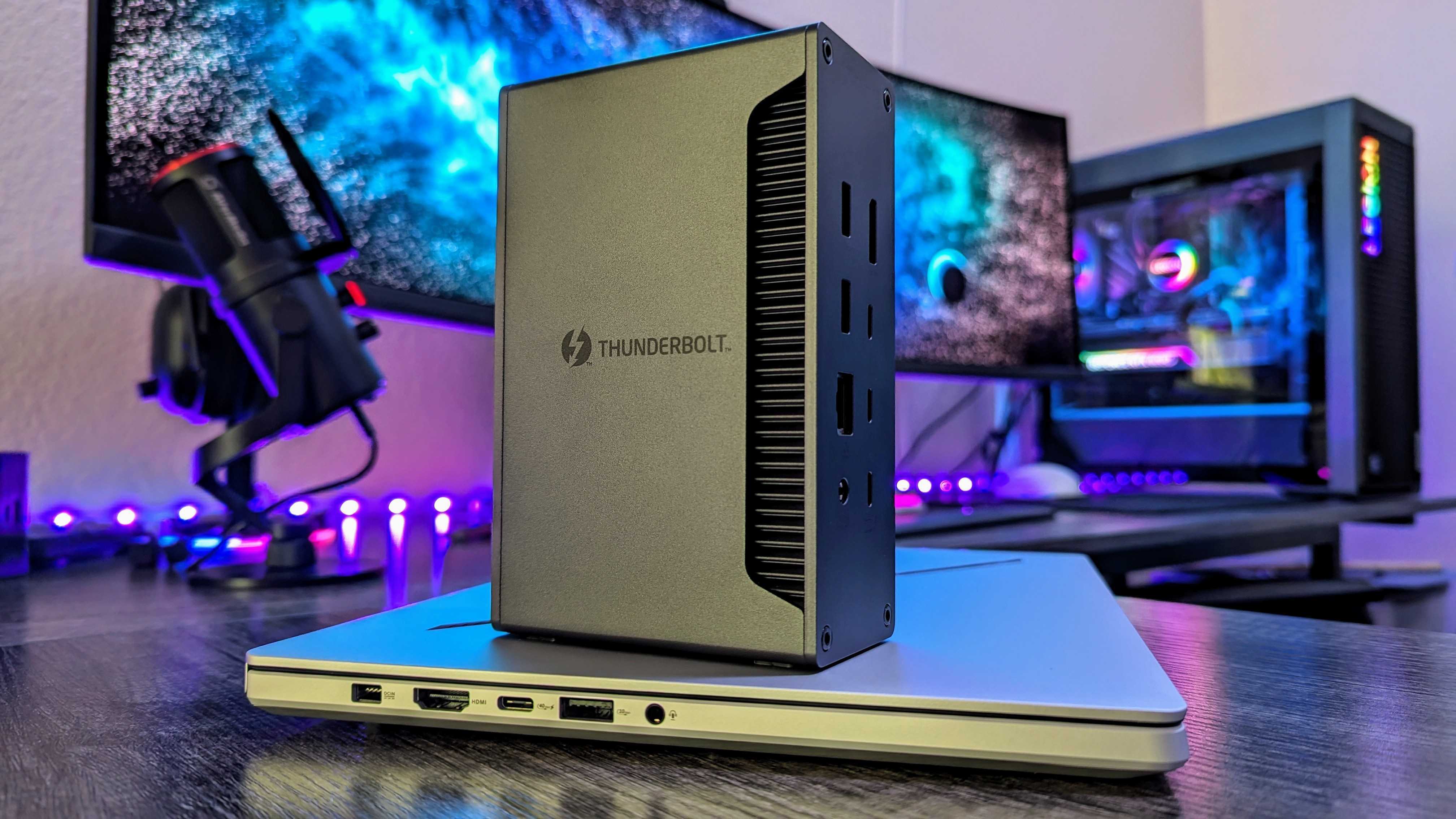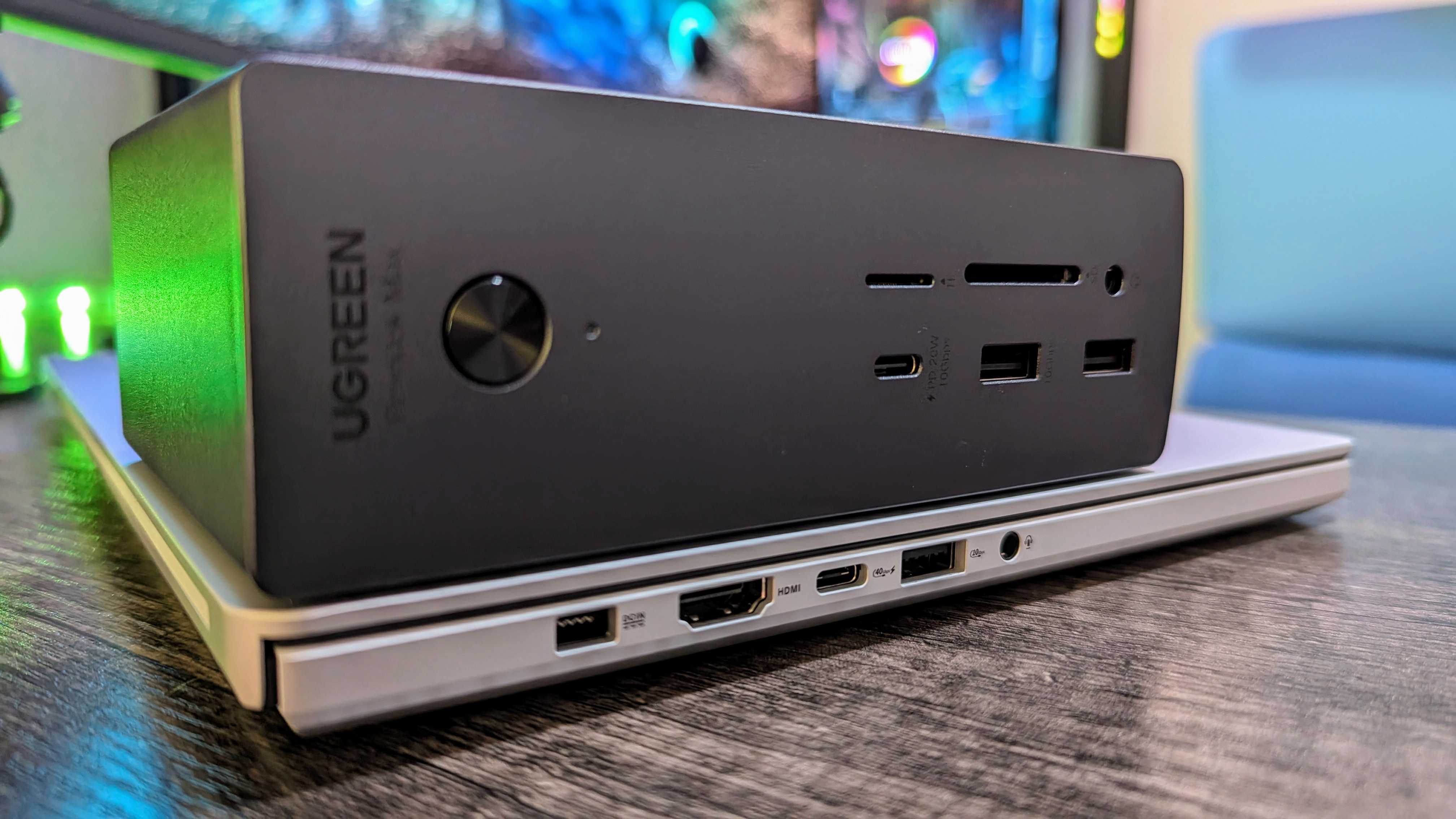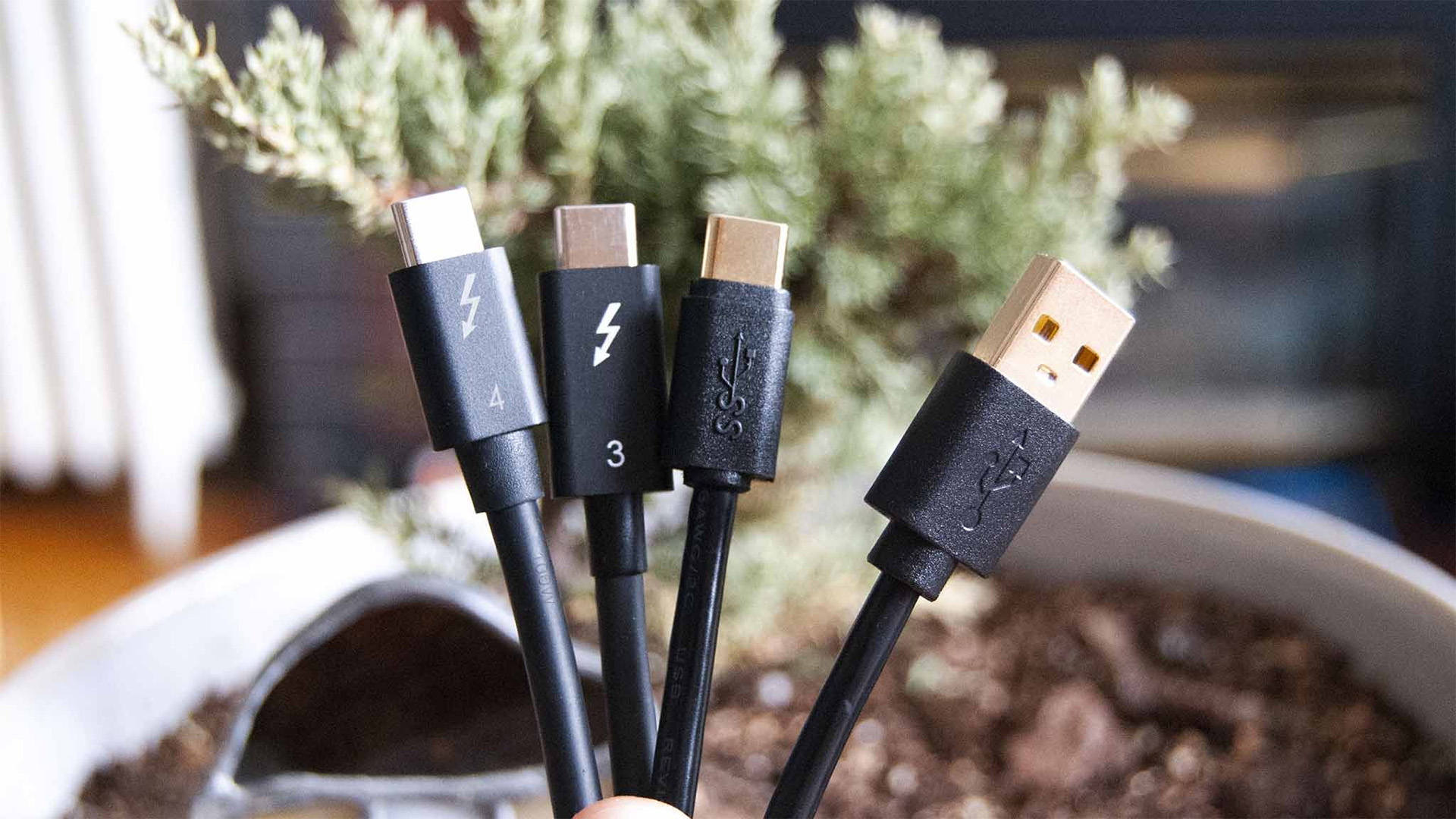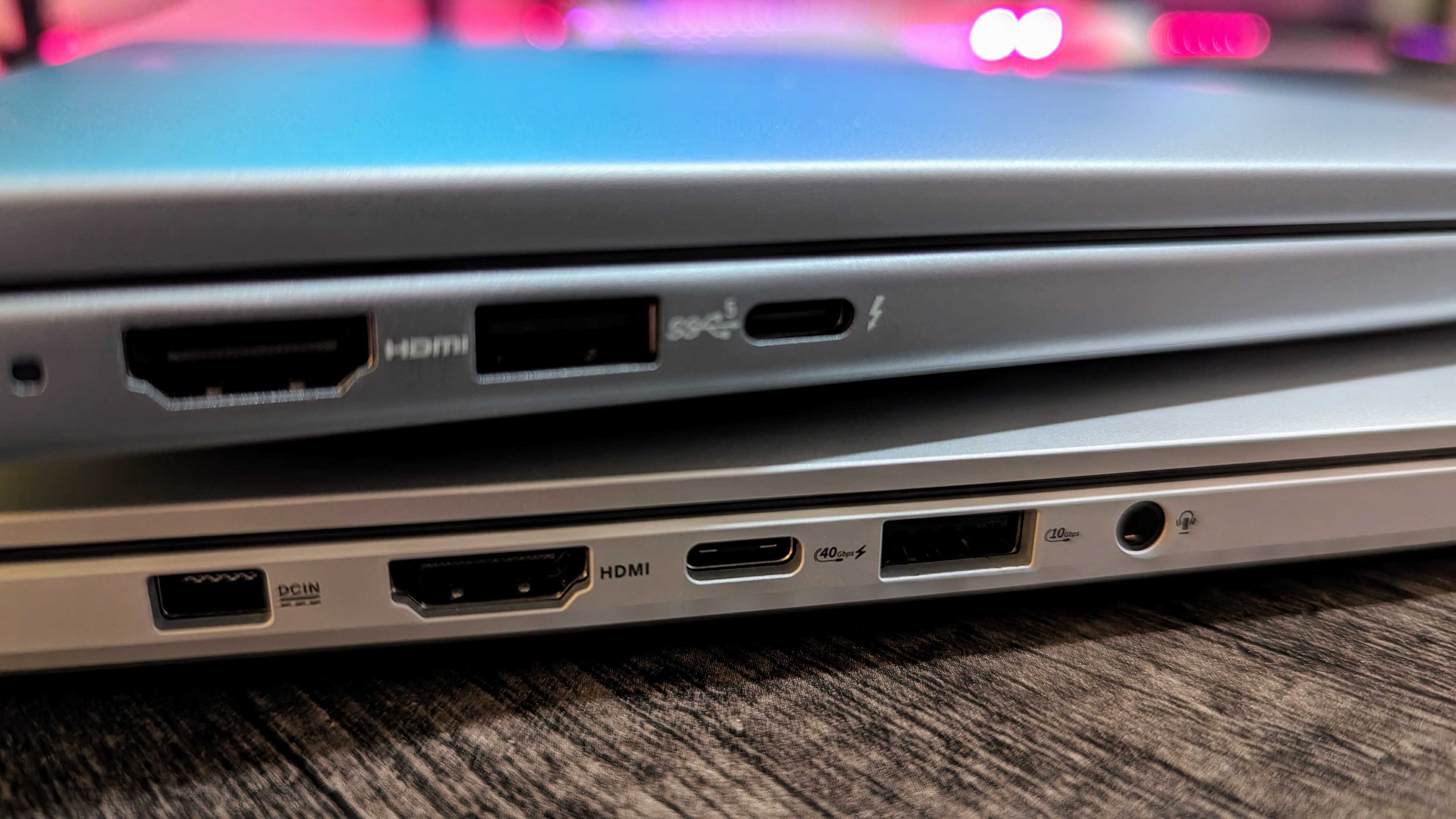Can I use Thunderbolt 4 or 5 docks with USB4 laptops?
When your PC doesn't have a Thunderbolt port, what are your options?

Can laptops with USB4 ports use Thunderbolt 4/5 docks?
Yes, but it's complicated. USB4 brings cross-compatibility with Thunderbolt 3 and can support the same features/bandwidth as Thunderbolt 4 (and even Thunderbolt 5 in the future), but not all USB4 ports are the same (and 100% compatibility is rarely guaranteed). You'll need to check the data bandwidth of your device's USB4 port to have a better idea of what you can use.
The majority of the laptops sold in the world are powered by Intel, and now most of those laptops also boast USB Type-C Thunderbolt ports. The Thunderbolt standard becoming prolific across modern Windows PCs is awesome, but it does leave non-Intel users completely out of the fun. If your PC of choice is equipped with AMD or Qualcomm hardware, it may feature USB4 ports instead of Thunderbolt. If that's the case, are you able to use the vast ecosystem of existing Thunderbolt accessories like docks and hubs?
The answer is fortunately positive, but unfortunately convoluted in the same way that the rest of the USB format is. USB4 ports are more capable than ever, but the persistent fragmentation that has afflicted USB for generations still remains. There are multiple USB4 versions that manufacturers can equip their laptops with, and they're not all created equal! In this article, I'll explain it all and tell it to you straight: can you use Thunderbolt 4 or Thunderbolt 5 docks with your USB4 laptop?
Understanding USB and Thunderbolt
Despite most of the world fully embracing the USB Type-C connector, USB itself is still a confusing mass of conflicting versions. This is even with USB basically being controlled by two entities; the USB-IF (Universal Serial Bus Implementers Forum) is in charge of the foundational capabilities, specs, and branding of all USB ports and cables; Intel, on the other hand, owns the Thunderbolt brand, which builds enhanced power and more features on top of USB.
Where generic USB ports are unbelievably fragmented across generations of cross-compatibility, differing data bandwidths and protocol support, and multiple rebranding attempts, Thunderbolt is highly standardized, with strict requirements that manufacturers have to meet. That makes Thunderbolt far easier to understand, except Intel is the company behind it — meaning you'll need an Intel PC to take advantage.
It's not likely that you'll see a laptop with an AMD Ryzen or Qualcomm Snapdragon X series chip under the hood boast Thunderbolt support, but that doesn't mean you have to avoid those laptops entirely if you require very fast and very versatile ports. The latest generation of non-Thunderbolt USB Type-C ports is known as USB4 — these are some pretty powerful ports that can do basically anything a Thunderbolt port can do... With some caveats. Let's compare the two.
USB4 vs. Thunderbolt 3/4/5
If you want the full rundown, we have an in-depth guide on USB4 vs. Thunderbolt 4 vs. Thunderbolt 3 that you can check out. In the meantime, I'll provide the trimmed down synopsis. USB4 is the latest USB standard released by USB-IF, and it continues to improve the universal USB Type-C port that's on practically every new electronic under the sun. USB4 is unique versus previous USB standards in that it's actually built on top of Thunderbolt 3, which Intel made open source.
That means USB4 matches the capabilities of Thunderbolt 3 out of the door, and it has the potential to match Thunderbolt 4 (and soon Thunderbolt 5) as well. Of course, USB-IF couldn't be content with just making an open-source Thunderbolt alternative, as USB4 isn't entirely one-to-one with the Thunderbolt standard. What makes Thunderbolt so valuable to professionals, creatives, and so many other people are the stringent minimum requirements each Thunderbolt port, cable, and accessory has to meet to be certified.
All the latest news, reviews, and guides for Windows and Xbox diehards.
USB4, on the other hand, has far looser requirements and as such can match Thunderbolt on one laptop but not on another. It's a frustrating situation, and now there are technically three different USB4 ports to watch out for. There is a lot that goes into a USB port, but some of what set Thunderbolt apart from regular USB Type-C ports in the past included being able to split multiple data types and protocols across the same bandwidth and in multiple directions, higher minimum requirements for display output and supported PCIe lanes, and better Power Delivery for device charging.
USB4 introduced major improvements in all three of those areas, introducing multi bidirectional lanes, DisplayPort 2.0 support for more/higher resolution/higher refresh rate monitors, and even better charging capabilities. However, USB4 2x2 only supports up to 20GBps, which falls well below the 40GBps ceiling of both Thunderbolt 3 and Thunderbolt 4. You'll need USB4 2x3, which does match the 40GBps bidirectional bandwidth and can do 80GBps in one direction via DisplayPort (for even more displays goodness).
This still doesn't always guarantee that the USB4 2x3 port on your laptop will 100% match everything a Thunderbolt 4 port can do, given the less strict requirements in other areas, but it's still significantly better than any previous USB generation could do. Finally, there's actually a brand-new USB4 variant that supports bandwidth up to 80GBps bidirectional and 120GBps unidirectional through DisplayPort 2.1, and 240W Power Delivery. It also introduced a new naming scheme (of course), and is known as USB4 2.0 or USB4 80GBps. This port is brand-new and likely not to be found on any current laptops, but it has the potential to match even Thunderbolt 5.
Now, USB 2.0 is USB 5GBps, USB 3.2 Gen 1 is USB 10GBps, USB 3.2 Gen 2 is USB 20GBps, USB4 2x2 is also USB 20GBps (but you get the USB4 features like better DisplayPort support), USB4 2x3 is USB 40GBps, and USB4 2.0 is USB 80GBps. Got it? No? Me neither. What matters is there is a USB4 port that can use Thunderbolt 3 and even Thunderbolt 4 docks and accessories, and there is a USB4 port coming in the future that should be able to use Thunderbolt 5 docks and accessories.
What to look for on your laptop
So, how do you know which USB4 port your device is using? Unfortunately, it kind of depends on your laptop manufacturer. You can use Device Manager to find out what kind of USB ports your laptop has (press Win + R, then type devmgmt.msc and press Enter, then scroll down to Universal Serial Bus Controllers, then expand the list to see your USB ports), but it may not tell you the exact specifications of each port. Ideally, though, your laptop manufacturer will have correctly labeled the ports on your device.
USB ports should be labeled with a small icon that's "USB" plus the bandwidth speed, and then occasionally additional icons like a tiny lightning bolt (for Power Delivery support) or "DP" (for display output support). You'll want to look at each of the USB Type-C ports of your computer and see if any are labeled with "USB 40GBps." That's a USB4 port, and it should support Thunderbolt 3 and Thunderbolt 4 accessories! If any of your ports are only labeled with a large lightning bolt with an arrow at the end, then that's a Thunderbolt port and you probably don't need this article.
As new Windows on ARM PCs begin arriving off the back of Qualcomm's latest hardware, USB4 should get a lot more common. Hopefully, most manufacturers will opt for the higher-end USB4 standards to ensure that users can also take advantage of cross-compatibility with Thunderbolt 3 and Thunderbolt 4 accessories, but I won't hold my breath with some companies.
Just be diligent and ensure you're using the right port on your device and that you have a USB4/Thunderbolt cable (not all Type-C cables are the same), like this USB4 Type-C cable for $34.99 at Amazon. Also, keep in mind that even if you do everything right, your USB4 laptop may not be able to use 100% of a Thunderbolt 4 accessory's capabilities. It also helps to check Thunderbolt accessories before you buy to see if the manufacturer guarantees cross-compatibility with Thunderbolt 3 and USB4 devices, like the UGREEN Revodok Max 213 Thunderbolt 4 Docking Station I've been using (and will review soon), which you can get for $399.99 at Amazon.

Zachary Boddy (They / Them) is a Staff Writer for Windows Central, primarily focused on covering the latest news in tech and gaming, the best Xbox and PC games, and the most interesting Windows and Xbox hardware. They have been gaming and writing for most of their life starting with the original Xbox, and started out as a freelancer for Windows Central and its sister sites in 2019. Now a full-fledged Staff Writer, Zachary has expanded from only writing about all things Minecraft to covering practically everything on which Windows Central is an expert, especially when it comes to Microsoft.




